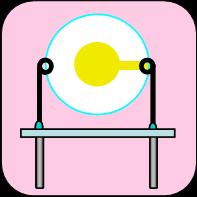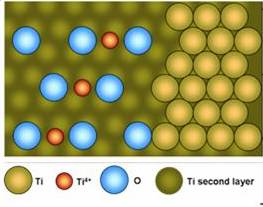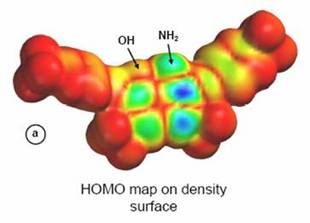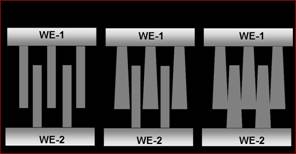 THE DEPARTMENT OF AT STATE
UNIVERSITY OF NEW YORK, POTSDAM N.Y.
THE DEPARTMENT OF AT STATE
UNIVERSITY OF NEW YORK, POTSDAM N.Y.CHEMISTRY
Research with
Students
List of Student Research Projects
Learning through research
Raman Imaging and Spectroscopy Lab
Chemical and Biological Applications of Raman Spectroscopy (pdf, 7 MB)
Quartz Crystal Nanobalance Lab
Studies

Electrochemical Quartz Crystal Nanobalance (EQCN) technique utilizes quartz vibrations and piezoelectric effect to measure mass changes as small as a fraction of a monolayer of atoms
_____________
Students interested in studies abroad: please search the following pages on SUNY Potsdam Webste:
-
International Education
-
Schwallers Endowment for Study Abroad Scholarship
-
SUNY Programs for Study Abroad & Exchange
_____________
Back to
Professor Maria Hepel
INTERNATIONAL CONNECTIONS
Stowell Hall
44 Pierrepont Ave.
Potsdam , NY 13676, U.S.A.
Tel.: +1.315.267.2267
Fax: +1.315.267.3170
International research collaborations and students exchange:
-
Professor Zbigniew Stojek from the University of Warsaw, Poland, and his research associate Dr. Anna Nowicka collaborated with Dr. Hepel on the development of DNA biosensors to evaluate DNA damage caused by pesticide and herbicides. This collaboration resulted in publications: in Biophysical Chemistry 146 (2010) 43-52, ECS Transactions 19 [28] (2009) 1-13, and Electroanalysis 22 (2010) 2323-2329, and presentation on the Pittsburgh Conference in Orlando, FL, March 2010.
-
Dr. Magdalena Stobiecka, a researcher from Polish Academy of Sciences (PAN), Olsztyn, Poland, from the Biosensor Group of Professor Jerzy Radecki, is a Visiting Scholar at SUNY Potsdam and is currently working with Dr. Hepel on a DoD Project (2008-2011) which resulted in a number of publications (including recent papers in Biomaterials 32 (2011) 3312-3321, Journal of Photochemistry and Photobiology A 225 (2011) 72-80, Biophysical Chemistry 146 (2010) 43-52, Journal of Colloid and Interface Science, 350 (2010) 168–177, Sensors and Actuators B, 149 (2010) 373-380, Physical Chemistry Chemical Physics 13 (2011) 1131-113), several chapters in books, and presentations at the National Meetings of the American Chemical Society (Denver, CO, in 2011; Boston, MA, in 2010; Washington, DC, in 2009), on the 4-th International Conference on Oxidative/Nitrosative Stress and Disease in New York, NY, 2009, at the New York Academy of Sciences; and also on the Materials Research Society Meeting in Boston, MA, 2009, and on the International Fischer Conference in Benediktbeuern, Germany, in 2009. Previous collaboration with Polish Academy of Sciences resulted in publications: in Electrochimica Acta 50 (2005) 4873-4887 and Bioelectrochemistry 70 (2007) 155-164 and presentations at the International Society of Electrochemistry Meeting in Thessaloniki, Greece, 2004 and at International Society of Electrochemistry Meeting in Busan, Korea, 2005. Dr. Hepel visited PAN, in Olsztyn, in 2006.
-
Dr. Hui Xu, a researcher from Ludong University, China, visited SUNY Potsdam in 2010 and performed with Dr. Hepel research studies on DNA biosensors. The collaboration resulted in a publication in Analytical Chemistry 83 (2011) 813-819.
-
Professor Petr Skladal from Masaryk University, Brno, Czech Republic collaborated with Dr. Hepel in the field of piezoimmunosensors and two of his doctoral students, Jan Halamek and Jan Pribyl, visited SUNY Potsdam and performed research studies (see: next) resulting three publications and several conference presentations.
-
Dr. Jan Pribyl from Masaryk University in Brno, Czech Republic, visited SUNY Potsdam in Fall 2001 and worked with Dr. Hepel on developing piezoelectric immunosensors for toxic pollutant PCB in Fall 2001. These studies have been published in the Journal
Sensors and Actuators, Chemical B, 91 (2003) 333-341 and 113 (2006) 900-910 by J. Pribyl, M. Hepel and P. Skladal.
-
Dr. Jan Halamek from Masaryk University in Brno, Czech Republic, visited SUNY Potsdam in Spring 2000 and studied with Dr. Hepel piezoelectric immunosensors for pesticides 2,4-D and atrazine, results being published as a Chapter in the book "Chemical & Biological Sensors and Analytical Methods", Proceedings of the International Society of Electrochemistry and the Electrochemical Society Meeting, San Francisco, Sept. 2-7, 2001, (Eds) P. Vanysek, S. Bruckenstein.
-
Kanna Ito, SUNY Potsdam chemistry major, carried out research studies at Masaryk University in Brno, Czech Republic, during Summer of 2002, as an exchange student. The collaboration of Dr. Hepel's group with Dr. Petr Skladal at the Masaryk University in Brno resulted in visits of two doctoral students from Brno in SUNY Potsdam and several publications.
-
Dr. Hepel collaboration with the Center for Materials Research in Energy Conversion at the University of New South Wales, Sydney, Australia, resulted in her visit in Sydney in February-March, 2006, and a publication on solar energy conversion in the International Journal of Hydrogen Energy (2006/7), available on WEB.
-
Dr. Mieczyslaw Scendo from Saint-Cross University in Kielce, Poland, visited SUNY Potsdam in 2002 and performed research with Dr. Hepel on copper corrosion inhibition using ethylxanthate films deposited in-situ on copper piezoelectrodes. The results have been published as a Chapter in book "Thin Films: Preparation, Characterization, Applications", (Eds.) J. Stickney and M. Soriaga, Kluwer Academic/Plenum Publishers, New York, 2002, pp. 171-184.
-
Dr. Jin Luo from the University in Xiamen, China, visited SUNY Potsdam in 2001 and spent one year investigating with Dr. Hepel photoelectrocatalytic processes of dye pollutant degradation on transition metal oxide semiconductor electrodes. Results have been published as an invited paper for the Special Issue "Electrochemistry and the Environment" of Electrochimica Acta. 47 (2001) 729-740, paper entitled: "Photoelectrochemical Mineralization of Textile Diazo Dye Pollutants Using Nanocrystalline WO3 Electrodes".
-
Dr. Irina Shiyanovkaya from Kiev University, Ukraine, visited SUNY Potsdam in 1996 and investigated with Dr. Hepel photocatalytic and electrochromic processes using nanostructured semiconductor film electrodes. Papers published: Journal of Electrochemical Society 145 (1998) 3981-3985; 145 (1998) 1023-1028; 146 (1999) 243-249; Journal of New Materials for Electrochemical Systems 3 (2000) 241-247.
-
Dr. Hepel was awarded a NATO Collaborative Research Grant CRG 930020 for 1993-1995, for collaboration with Dr. Ulrich Stimming, Director of the Institut fur Energieverfahrenstechnik, Julich, Germany, which resulted in Dr. Stimming visit at SUNY Potsdam. Dr. Hepel visited Julich in Germany in the Spring of 1992. Her visit resulted in a collaborative study: "Composite PPy/Pt Films as Potential Materials for Fuel Cells" by M. Hepel, Y.M. Chen, U. Stimming, published in Proceedings of the First International Symposium on New Materials for Fuel Cell Systems, July 9-13, 1995, Montreal, Canada, 1995, pp. 629-657, Publishers: The Montreal University, (Eds.) O. Savadogo, P. R. Roberge, T. N. Veziroglu.
-
Dr. Hepel visited University of Bristol, U.K., in Fall 1991 and investigated reactivity and properties of tetracyanoplatinum salts using EQCN and SEM. This research resulted in a publication with D.C. Loveday, A.R. Hillman, A.G. Orpen and P.G. Pringle (Journal of Materials Chemistry 6 (1996) 993-998).
-
Dr. Zbigniew Fijalek from Drug Reserach Institute in Warsaw, Poland, carried out at SUNY Potsdam investigations with Dr. Hepel on drug release conductive polymer films during Summer 1991. The collaboration has led to publication of a Chapter in book: "Polymeric Drugs and Drug Administration" entitled: "Electrorelease of Drugs from Composite Polymer Films" by M. Hepel and J. Fijalek, ACS Symposium Series 545, Chapter 7, Washington, D.C., 1994, pp. 79-97.
-
Professor Wladyslaw Janusz from Marie-Curie-Sklodowska University in Lublin, Poland, visited SUNY Potsdam and studied photoelectroactive methylene-blue films on gold EQCN electrodes in 1990. His work resulted in a collaborative publication: "Study of Leuco-Methylene Blue Films Growth and Its Reoxidation on Sulphur-Modified Au-EQCN Electrode" by M. Hepel and W. Janusz, Electrochimica Acta, Special Issue on "The QCM in Electrochemistry", 45 (2000) 3785-3799.

Nanoporous TiO2
for solar energy conversion and direct methanol fuel cells

Degradation of dye pollutants
Electron density surface
with map of highest Occupied Molecular Orbitals (HOMO) for dye pollutant Remazol Blue Black. Decomposition of pollutants studied by photo-electrocatalytic method using TiO2, WO3, and MoO3 semiconductor electrodes

Quantum Conductance Monatomic Nanobridge Devices
studied using conductanc spectroscopy and AFM/STM